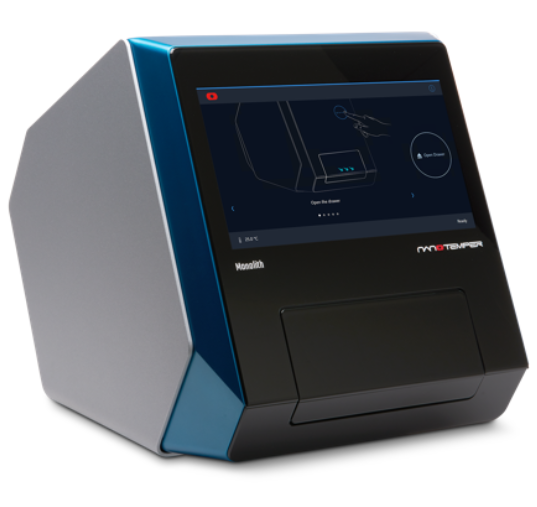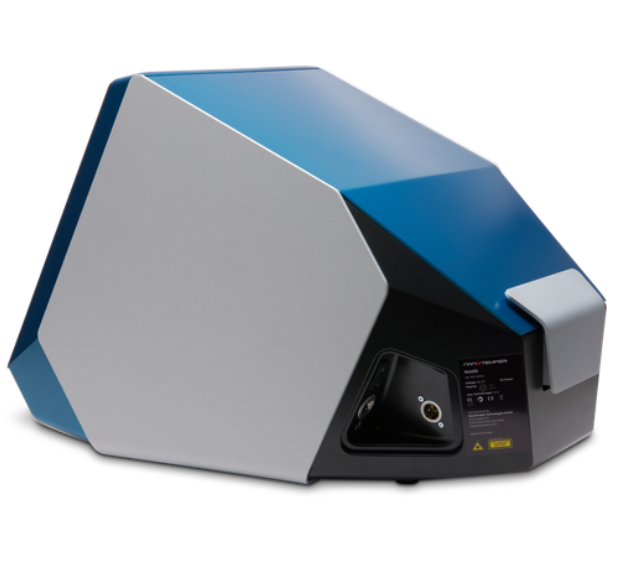




Monolith uses MST technology to quantify molecular interactions between a target and ligand by detecting changes in fluorescence intensity while a temperature gradient is applied over time (grey box, top figure). The fluorescent signal comes from the target that is either fluorescently labeled or has intrinsic fluorescence and becomes an extremely sensitive reporter for the interaction. The binding affinity is automatically determined at the end of each run without additional and lengthy data analysis. The affinity constant (Kd) is calculated from a fitted curve that plots normalized fluorescence against concentration of ligand (bottom figure).
|
 |
|
|
|
|
|
|
|
|
|
|
|
Monolith Pico |
|
Monolith |
|
Monolith LabelFree |


Please email us at cs@medikonia.com for any enquiry. To place an order, please include the catalog number(s) of the product(s) in the email. Thank you.